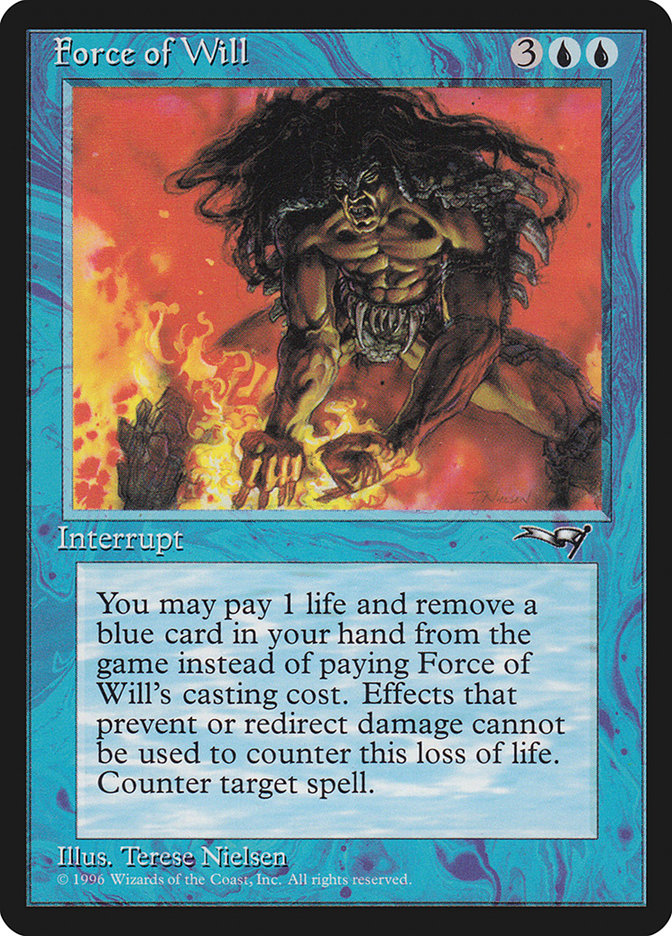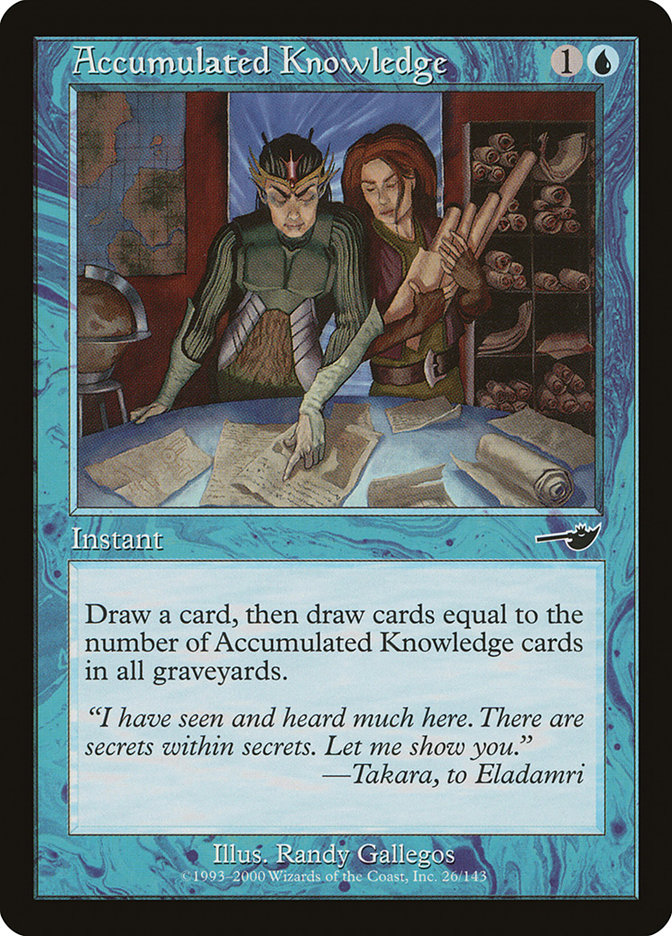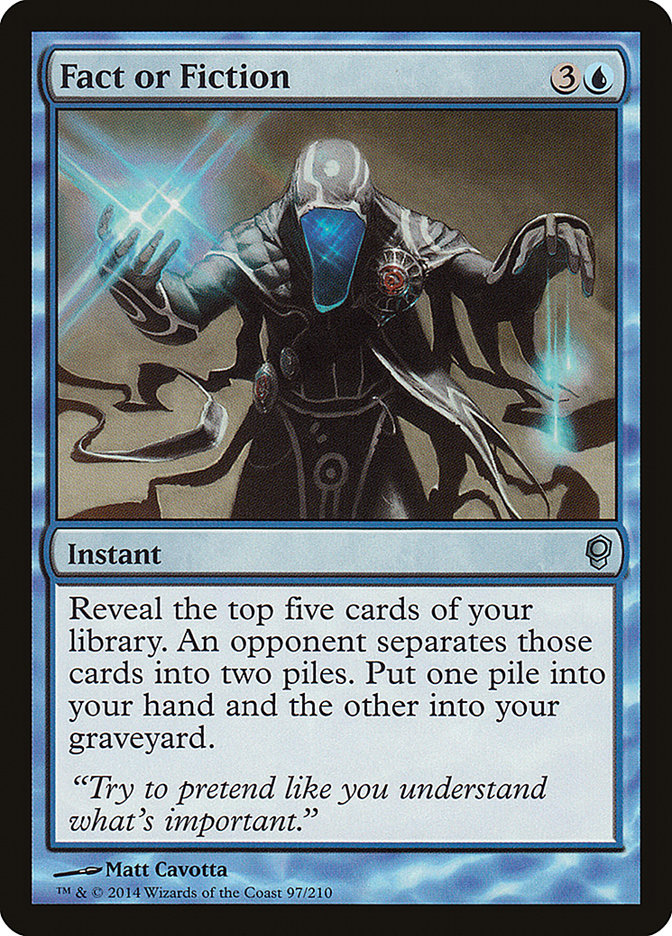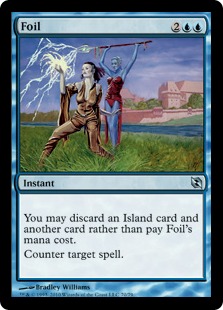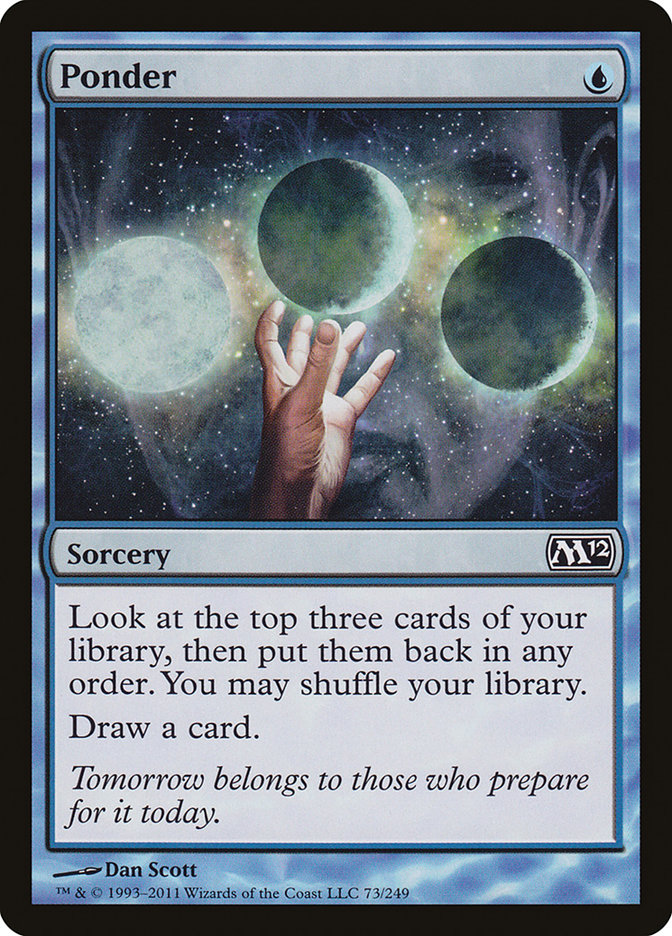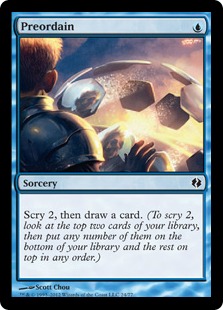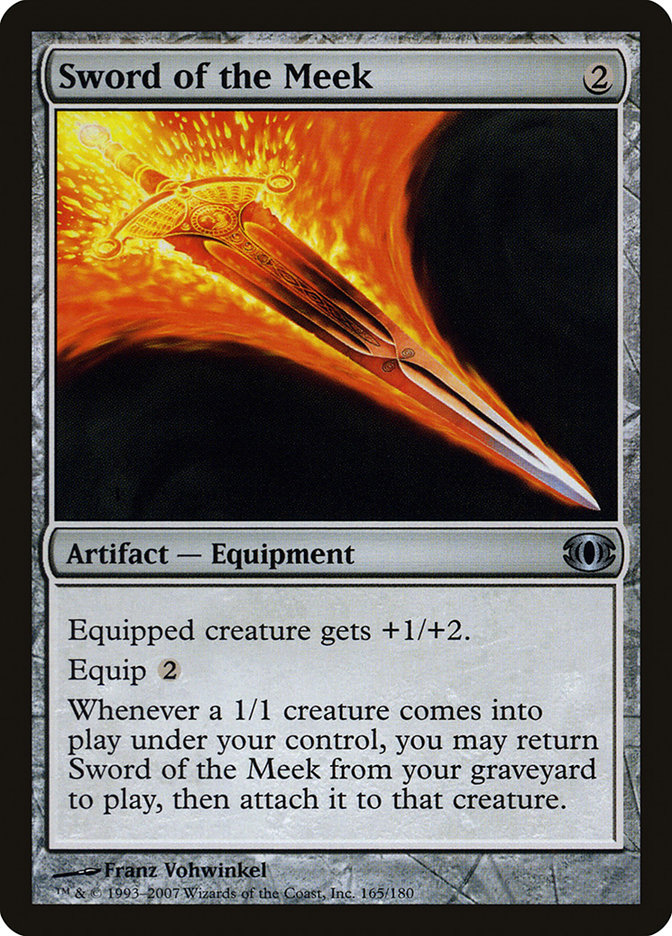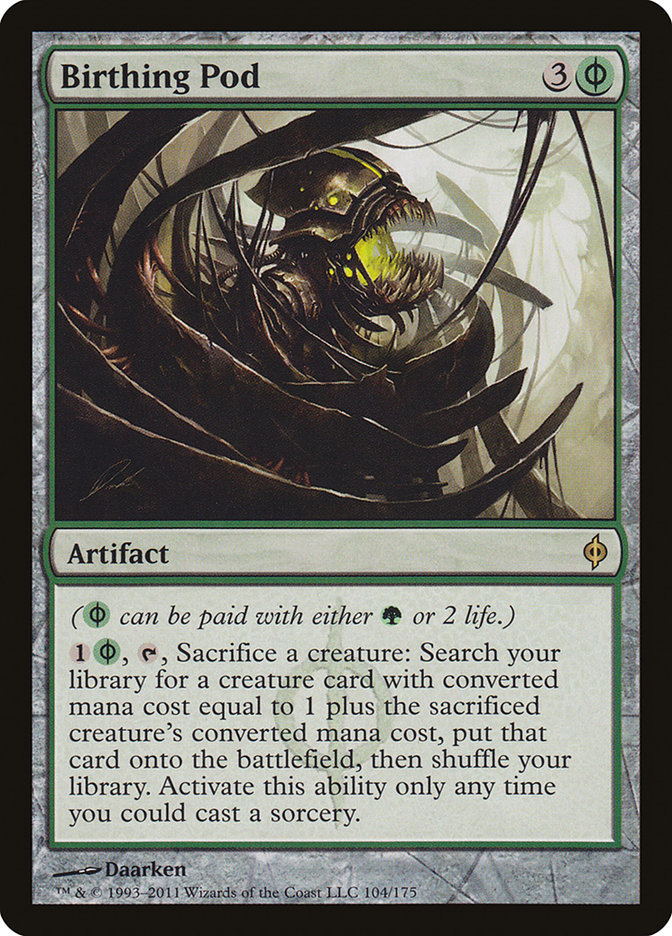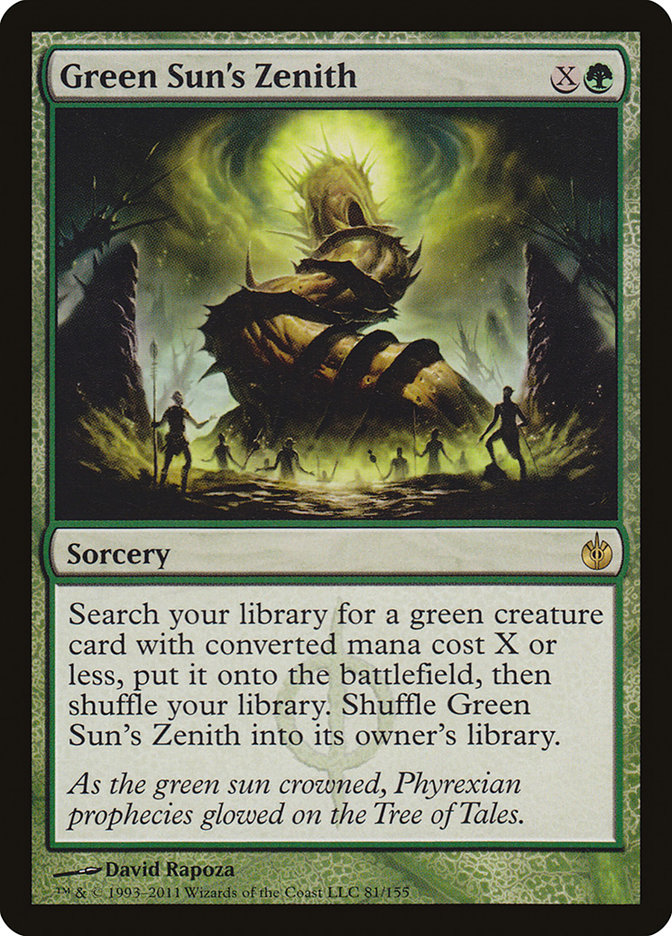There are always people complaining about every format.
There are always even more people complaining about Modern.
I’ve always been on the side of defending the format. There are a lot of really awesome things you can do in the format, and it really has a unique flavor
to it. Standard doesn’t approach the levels of interesting interactions, while Legacy has all sorts of limits set by cards like Wasteland.
However, the last set of bannings pushed the format in a direction that lines up with a lot of the common complaints. Play Jund/Abzan or play combo. Draw
your hate card, outrace the other person, or die.
I don’t deny this appears to be true right now. That exact mentality is how I approached the Pro Tour, and by the sound of it, that is how a lot of other
people approached it as well. And while I don’t think that playing the format wasn’t great, I also won’t deny this isn’t an ideal place for the format to
be. It isn’t accessible. Play the most expensive deck or switch every week. It really isn’t dynamic. Did you Thoughtseize my card or play a hate card? No?
Then I did my thing and you died.
I also know it can be better. I’ve played the format at points where it wasn’t, and I know it can be that way again. The question is how to get from here
to there, and it’s a tricky one.
As always, let’s start from the bottom.
Why We Need Modern
If you like consuming official Wizards content, a lot of this is going to be me rehashing a lot of things voiced there that made a lot of sense when I read
them. As always, I like working through things from the bottom up so that both my premises and my conclusions can be questioned.
This premise is a pretty simple one: Cards should not be disposable items. They should hold long-term value and purpose.
To anyone who isn’t completely imbedded in competitive Magic the way I am, this is kind of a silly issue. I’ve been listening to a ton of Mark Rosewater
podcasts, and something he likes to bring up is that Magic is both a changing game and an additive game. Non-tournament Magic is mostly the latter. The
cards you have are the cards you play, and when something is printed eight years later that does something cool with a card no one considered from before,
you have demand and value added. Easy. Nekusar, the Mindrazer is printed and all the draw sevens are suddenly hot items.
But competitive Magic is a changing game, and as long as I’ve been playing it, that has been the draw of it. Standard is the big format, and it is always
changing. Cards in, cards out. But change means cards must come and go, even if you keep repeating every previous card, eventually you hit a number of
total cards so high that repeating everything is impossible.
So, you will have cards that can’t be repeated. And some of those cards are ones that only have competitive appeal. The perfect example is probably
Tarmogoyf. If it wasn’t seeing play in Eternal formats, it wouldn’t be worth a fraction of what it is today. It might even be forgotten, as a vanilla
creature with a hard cap isn’t that exciting. Boneyard Wurm can be a 20/20, why mess around with a 5/6 or 6/7?
These are not cards that should just be forgotten. At the very least, it’s a giant spew of Development time and effort for these cards to cease to be
relevant after a year. At the most, it’s pretty miserable as a competitive player knowing the cards you are obtaining to play Standard cease to be worth
anything at a set point. Obviously this happens to an extent, but if the cards remain legal somewhere after the fact, there’s some hope of them remaining
useful or valuable.
I’ve heard multiple people bring up the idea of just bringing back rotating Extended. Remember what happened to the price of Tarmogoyf when it rotated from
Extended? This only stalls the inevitable. You have the same issue six, seven, eight years from printing instead of one or two.
So we’ve established cards have to remain legal for competitive use somewhere. Eternal and Standard are two sides of the same coin that makes the whole of
competitive Magic. Competitive cards need a place to stay useful until the point they are obsoleted by better cards, at which point your problem changes
from “I’m taking your toys” to “Here are new and better toys, you don’t really care about those old ones anymore, right?” Sounds like a much better
situation.
As for the rest, blah blah Reserved list. Not even going to debate this as that’s its own can of worms. Long story short, an Eternal format has to exist
that is sustainable regardless of the growth of the game, and something like Legacy or Vintage just can’t be that format because the supply of cards will
only decrease. Given enough time, even if the number of players remains the same, the format will die to physical attrition. Rather than wait for this to
happen and solve it when it becomes a huge issue, Modern was created to solve the problem before it starts.
Great, we’ve eliminated “bring back Extended” and “Legacy is better” as actual solutions. What next?
Linear Strategies and Combo
The format is all combo! It’s non-interactive, win the roll or have a nut draw and you win. Rabble rabble boo hiss.
Guess what, you can’t have an Eternal format without combo, and combo isn’t inherently a bad thing.
Over time, combo-style interactions will just appear as you add more and more cards to the format. They will get more and more powerful as you add more
cards.
You can’t ban them all. I mean, you can, but you have to ban a lot of cards, and that’s basically a non-starter. Again, it’s better to make people want to
play with new, shiny, exciting toys than just take away what they have.
But you have to draw a line somewhere. Some of these interactions will be too good, and they have to be eliminated if the format isn’t going to devolve
into a non-interactive mess.
A line has been drawn in Modern that winning the game before turn 4 isn’t really okay. Except that has been violated time and time again.
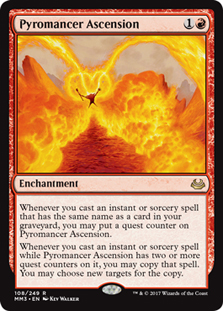
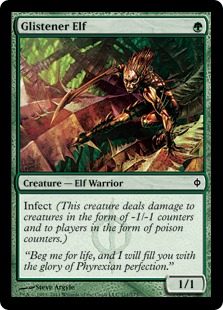
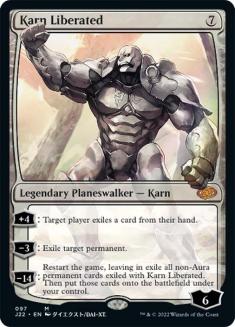
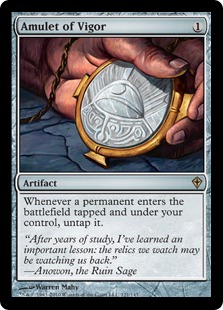
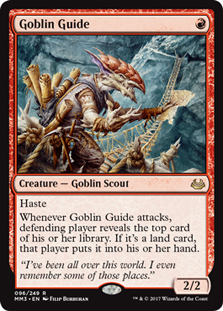
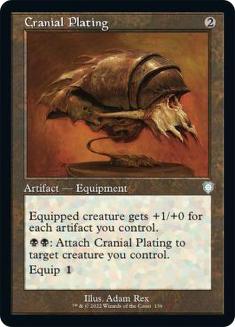
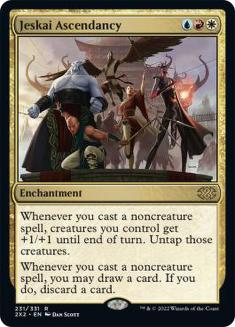
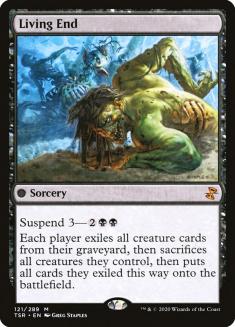

All of these decks can pretty easily kill before turn 4. I guess technically getting Karned on turn 3 is a winnable boardstate, and technically Goblin
Guide, Boros Charm, Skullcrack, Lightning Bolt is only sixteen damage, but the only way you are pulling out of these situations is some absurd hate card or
killing them immediately after. Attempting to continue a normal game from that point is basically impossible.
I’m not really sure whether there’s a hard rule about combo decks existing in Modern right now, but honestly I’m okay with the subjective “Not egregiously
overpowered or obnoxious” as a criteria for continued existence.
Now, let’s talk about Legacy for a minute.
In Legacy, there are layers to combo in the metagame.
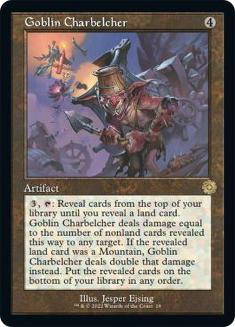
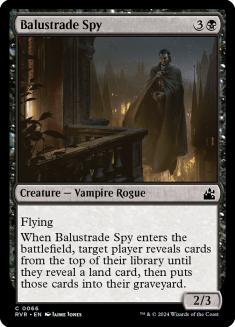

You have the all-in varieties that end the game immediately but at the cost of things getting any better beyond their opening hand. They also lack
reliability through interaction, as A) it takes a lot of cards to kill someone with these decks, meaning you can’t afford to play much interaction, and B)
you have no way to find the interaction.
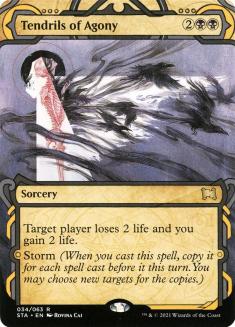
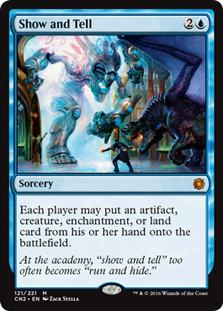

You have the single big spell varieties that still offer a lot in the speed department but add resiliency. Their fault is that the game comes down to a
single showdown where either their one main spell resolves or they do nothing. Usually these decks are very good at sculpting their game around this, but
it is still exploitable.
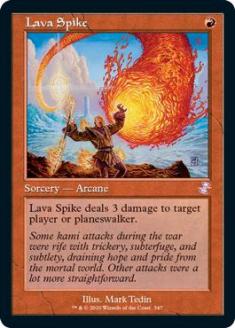
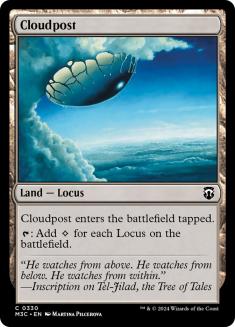
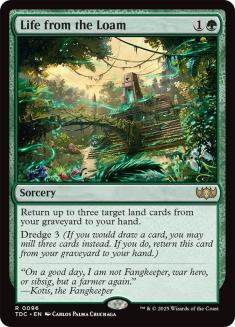
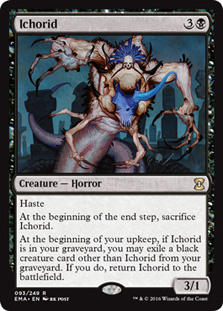
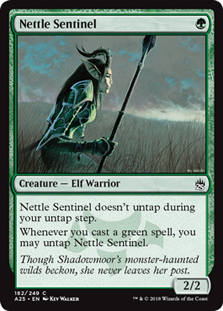

Then we see a tier of decks that is based around some kind of engine. They have the ability to have explosive draws, but their strength is that in the face
of non-specific disruption (Thoughtseize, Force of Will) they can still execute a gameplan. That first Elf that resolves still can attack for twenty, and
stopping one Burn spell doesn’t stop the next ten. The drawback is that linear hate does exist for these decks and that almost universally they lose the
heads up fight to more pure combo decks. Elves has been pushing the line here a bit, but I’m still pretty sure I would take the Dark Ritual side of things
against any of these decks.
Let’s go back to Modern.
Instead of these layers, you have a much flatter structure.








While the can’t kill on turn 3 rule is stretched, there is definitely a high water line where anything that goes beyond it is cut out of the format. As a
result, you have a pileup just beneath it. Within this group, there really isn’t that much of a power level or speed difference. Sure, Infect is a little
faster against no disruption, and Tron’s “combo” doesn’t really shut the door on some other combo decks, but those are more deck specific flaws than
general strategic rules.
The cantrips in the format being horrible also adds into this. With combo, a lot of the divide between archetypes in Legacy has to do with how the deck
plays going long, and a lot of that has to do with cantrip quality. In Legacy, you can set up long sequences of turns where you cantrip into the right mix
of cantrips and other cantrips where your hand is improving every turn.
As I mentioned last week, the Modern cantrips all replace themselves with random cards
with only Sleight of Hand as a one-mana exception. As a result the increase in draw quality over long periods from playing cantrips is far lower, and you
are incentivized to just play redundant combos over ones with selection. The push away from cantrips also means the average combo deck isn’t going to be
selecting its way into interaction, instead relying on linearly beneficial interaction if it has access to it. Think Grapeshotting their board out of
Storm, Vines of Vastwood to counter removal in Infect, Searing Blaze in Burn, or Galvanic Blast in Affinity. Instead of the Legacy plan of setting up and
finding your discard or counters to fight their interaction, the best plan against interaction in Modern combo is just gun it and hope they don’t have it
or you happen to also draw your answer to their answer naturally.
This flatness is what really causes the rotating hate trend Modern has.
You aren’t exploiting a metagame that shifted to fair decks by playing an engine deck, you are playing the deck people aren’t playing hate for that week.
The only reason that deck wasn’t good last week was that people had their Stony Silences then but replaced them with Kor Firewalkers today. There are some
cases where a normal, fairish card gets played that shifts what combo is good, but not a lot (more on this next section).
If you want to use the Legacy analogy, every Modern combo deck is Dredge.
That isn’t to say the hate is quite as powerful or specific as something like Leyline of the Void or Rest in Peace, but the effect is similar. When Legacy
Dredge is good, it’s because everyone forgot about Dredge. When Legacy Dredge is bad, it’s because it is remembered or incidentally lines up in hate for
another deck (Containment Priest for Elves). When Modern Affinity is good, it’s because people think two copies of Ancient Grudge is enough for it. When
Modern Affinity is bad, people are boarding a ton of Stony Silence to beat Eggs and Tron.
I’m not really sure this is definitely an issue, as it does mean there are a lot of decks to play, but it is a characteristic of the format that can become
undesirable at times. Ideally, it would be a game of “what combo deck beats people’s fair cards this week,” as that means A) people are interacting with
combo naturally and B) combo games aren’t all someone dying on turn 4 or the other person getting locked out of the game.
Golgari Dominance
I glossed over an important point in my analogy above.
All of the combo decks in Modern are spell-based. None of them are actual Dredge, where you can just win from game actions.
So why aren’t the fair decks all capable of handling them? It works in Legacy.
The generic answers in Modern just aren’t good enough. They all cost mana. Well, I guess we can’t have everything. They cost too much mana or are too
specific or time sensitive. Mana Leak gets bad too fast, same with Remand, and Deprive can’t be cast reasonably before turn 4 or 5 now that Treasure Cruise
tempo decks are dead.
Legacy has a number of things that help in this regard.
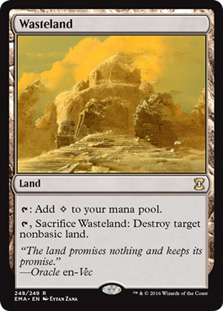
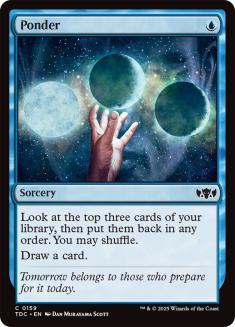
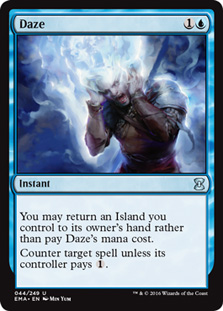

There is good mana disruption, and decks are incentivized to play land light because of the power of cantrips, making taxing counters valuable later into
games. In Modern people just play 25 lands and Mana Leak is a dead card by turn 5 or 6.
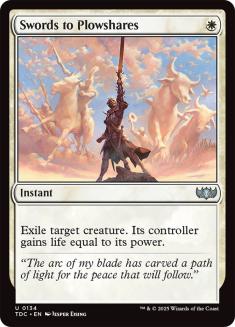


There are cards that are just good early and late. Counterspell always counters a spell and doesn’t cripple your mana early, unlike Mana Leak or Deprive.
Swords to Plowshares always kills a creature without significant issue, unlike Path to Exile ramping your opponent if you want to hit a mana accelerant.
You may notice that these examples specifically call out blue and white cards. Red isn’t really the generic answer color. What about green and black?
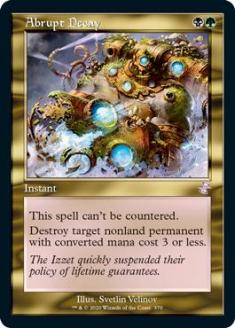


They just get to play the Legacy quality answers because they were printed in the last decade.
B/G decks are so powerful in Modern because they have access to the generic answers that every other deck doesn’t have.

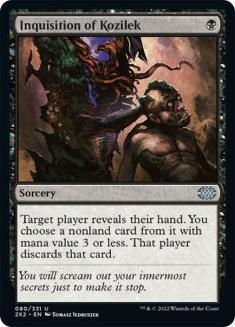

The two drawbacks of discard spells are that they become worse going later into the game and that you are spending mana without exchanging for mana your
opponent spent. In the context of a combo format where your opponent is likely to do virtually nothing if they are missing their key card, the mana issue
really doesn’t matter much.
Deathrite Shaman is always going to be associated with a turning point of Jund becoming dominant in Modern, but that card is now banned and B/G is still
dominating. Abrupt Decay was really the turning point from the deck Yuuya won Worlds with to the metagame presence it is today. Previously, Jund would play
Terminates or Maelstrom Pulses in this slot, leaving it exposed to a wide variety of threats. Abrupt Decay exposes Jund to expensive threats, but Modern as
a whole is fairly uninviting to four-cost cards. Now B/G decks have a lot more insurance facing down a Cranial Plating or Pyromancer Ascension that would
otherwise threaten to almost immediately end the game.
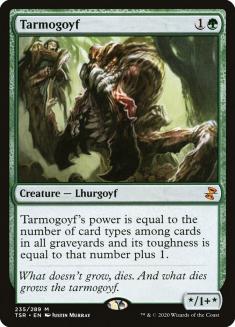

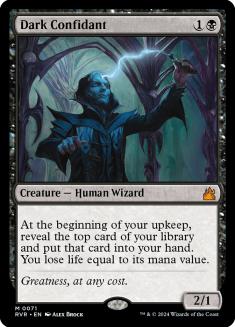
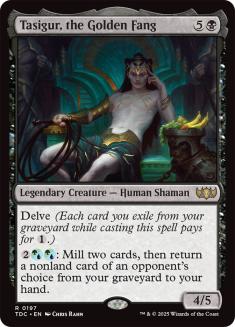

Green and black also have all the powerful low cost threats in the format.
A lot of the Modern combo decks require permanents in play but can kill from no exposed board presence on a main phase. Think Sylvan Caryatid or
Fatestitcher unearthed, then casting Jeskai Ascendancy or end of turn Deceiver Exarch into Splinter Twin. This creates a tension between deploying threats
and leaving up answers like Abrupt Decay to not die. B/G has almost all of the threats that are powerful enough to take over a game on their own but cheap
enough to land before you really have to fear death by combo.
Note that the key mana point on threats is two mana. Costing three puts you into spots on the draw where you know tapping out is most likely to result in
losing, which is the issue with Geist of Saint Traft. Costing two also means that on the play on turn 4, you can deploy a threat and leave up a two cost
answer. Geist of Saint Traft plus Mana Leak versus Tarmogoyf plus Abrupt Decay.
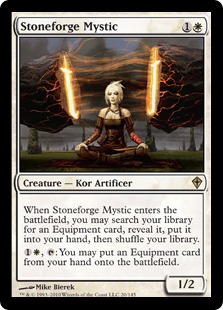
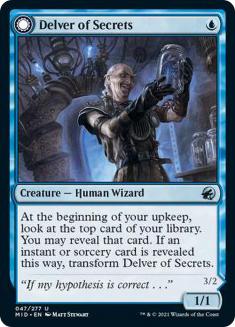
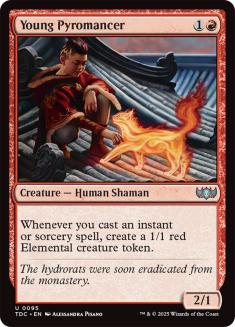

The other colors do have threats on the same level, but they have all been banned into nonexistence. In Stoneforge Mystic’s case, the ban was direct, but
with Delver of Secrets and Young Pyromancer all of the supporting blue cards have been attacked.
These are the core reasons, but there’s a bunch of other small things that just push things even further over the edge.
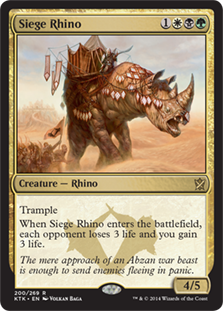
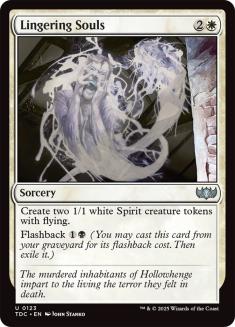
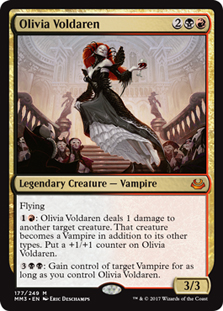

Easy access to the best threats for midrange mirrors.
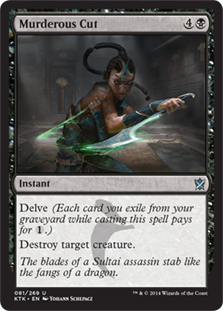
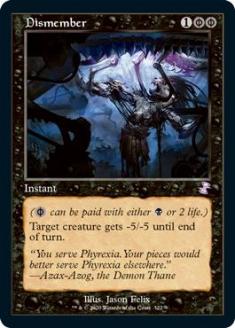

The best one mana removal, not even accounting for splashes of Path to Exile and Lightning Bolt. Note that while everyone has Dismember, B/G gets to play
it and have it actually get better as the game goes on.
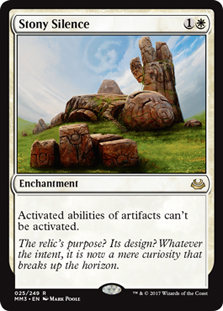
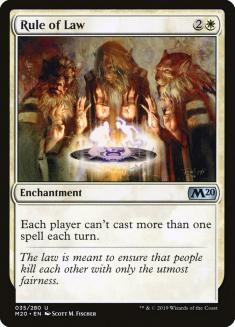
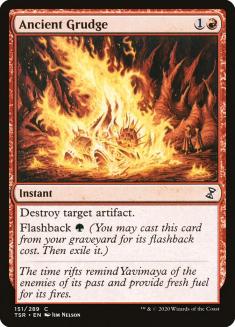
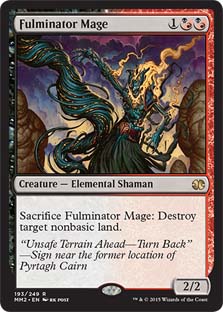
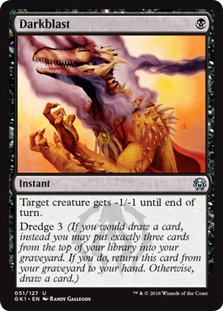

Basically all of the best sideboard options thanks to the way mana works in Modern. This is more of a three-color midrange trait in general, but green and
black probably takes the best advantage of it.
What Can Be Done?
Bannings?
What are you banning from B/G? So many of the cards are just replaceable, and none of the unique cards are really touchable.
Taking out Thoughtseize or Abrupt Decay really just opens the flood gates on combo.
Liliana of the Veil could go, but it isn’t even that good. It was when Deathrite Shaman made it a two drop, but now it could easily be too slow against
creatureless decks to matter.
Tarmogoyf? If you hit this card, it hurts other decks way more than it hurts B/G, and it hurts the players even more. I’m not actually sure you could ban
Tarmogoyf without driving a mass of people invested in Modern away from the format.
Subtraction from the format clearly isn’t the answer. Amulet of Vigor might go on the “no killing on turn 2” principle, but the way to change modern is
addition.
What needs to be added?
You need ways to make combo more interactive and less all-in or bust.
You need ways to make other decks to specifically beat B/G, likely card draw to attack the attrition plan the deck always plays.
You need ways to make other decks match B/G without just giving B/G more tools.
Reprints?
This is the solution I haven’t gone too deep on, but there are certainly Legacy legal cards that fall in the power level window between “good enough for
Modern” and “not good enough for the Modern banned list.” Here are a few that I’ve found so far looking at only the last couple of blocks before the start
of Modern.
Card advantage to attack B/G without being good enough to hit banned status? Fact or Fiction might be pushing it.
A card selecting cantrip that doesn’t really hit Ponder levels of power? Note that I ignored Portent because no one wants slowtrips.
Free interaction that isn’t quite Force of Will level, possibly allowing other decks to compete with combo. I’m unsure either of these really solves the
B/G issue though, as even with them I don’t think the tempo decks would perform well against Abzan.
Abrupt Decay level interaction that doesn’t slot into B/G very well.
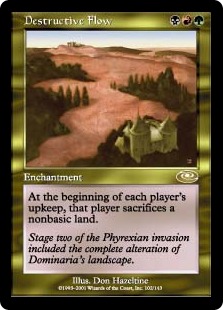
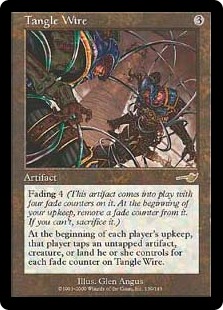
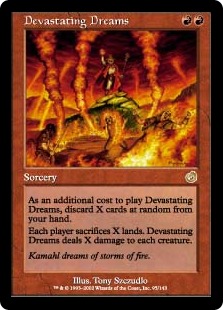
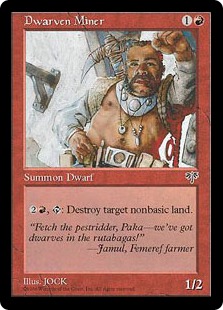


B/G is at its core a midrange deck, and attacking its mana is going to prevent it from hitting the trumps it needs for fair matchups. Blood Moon exists but
isn’t quite good enough, whereas these cards actually prevent B/G from making the mana it needs to hit the real breakers it uses to beat other fair decks.
Introducing an inherently fair engine deck might also help attack B/G. Life from the Loam doesn’t really do anything in Modern right now, as you only get
back lands to fuel low impact effects like Raven’s Crime or Flame Jab, but with cycling lands you have an actual engine that goes over the top of attrition
cards and efficient threats.
Going Deeper?
The problem with reprints is all of these cards currently would have to go through Standard first in order to make it to Modern. Cycling lands, Accumulated
Knowledge, and Opt might be good, but I highly doubt Fact or Fiction, Counterspell, or any of the land destruction cards would be remotely acceptable.
The goal of Modern as an Eternal format is to dodge the Reserved List. It does this, but there are still another four blocks printed after the reserved
list but before Modern.
Mirrodin was chosen as a starting point because the shift to new card faces makes a clean, visible cut. The original Overextended format
created as a pre-Wizards project by Gavin Verhey opted to start at Invasion block, as that was the start of Magic Online.
If you want to move older cards into the format without causing issues with Standard, this is a way. I don’t really like the solution for a number of
reasons, the biggest being that it feels like you are making a huge change to move the needle a small amount, but it does exist.
Of course, there are other ways of moving cards into the format without pushing them through Standard. You then have to make some definitions of what
supplemental products are actually Modern legal and what aren’t. A statement like “Modern Masters cards are legal in Modern” is simple enough on the
surface, but there are likely a number of technicalities that I’m missing that complicate the issue.
For example, you want to print a completely new card without pushing it through Standard. You put it in Modern Masters X. If you have old reprints in this
set, you have to limit the print run to not flood the market (if you wonder why that is an issue, look at the messed up economy of other card games that
ignore this rule). You now have a card only available in a limited print run set that is supposed to be a format staple. This does not mesh with the “cards
need to be available” premise of the format.
New Cards?
Of course, you can just introduce new cards the traditional way: by printing new cards in new sets.
I’m not going to give specific answers here but more generally talk about the qualities new cards would need to have to help out.
Again, the categories you are shooting for:
You need ways to make combo more interactive and less all-in or bust.
You need ways to make other decks to specifically beat B/G, likely card draw to attack the attrition plan the deck always plays.
You need ways to make other decks match B/G without just giving B/G more tools.
Getting the right power level on card draw is a real fine line, as we’ve seen with Treasure Cruise and Dig Through Time. I feel like this is a card type
that is also likely to have undesirable impact on Standard, mostly by making decks full of generic answers and card draw that ignore threat differences and
create a monotone format. That said, I was really impressed with Night’s Whisper in a Mardu Monastery Mentor shell in testing for the Pro Tour, so it’s
possible that cards of that level could be printed that are efficient enough to fight attrition wars in Modern but don’t dominate games in slower formats.
Non-creature four-drops are the other category of card that is good against B/G. Most likely this implies a planeswalker that has immediate board impact
through a minus ability that generates card advantage. Of course, again, there’s a slim margin between not relevant and Jace, the Mind Sculptor being
pushed for here.
As for giving other decks cheap threats or answers, that doesn’t seem horrible. It’s easy to condition cards to be great answers against a cheaper format,
but less good in a Standard format where threats move up the curve. Just remember that anything that doesn’t have restrictive costs or conditions might
just be the next tool in Abzan. On restrictive conditions, think Young Pyromancer. On restrictive costs, WW, UU, RR, or basically anything that takes more
than two non-green, non-black colored mana.
The really cool thing about new answers is that you can create more situations where the non-hate side of decks dictates the combo decks that thrive at a
given time. For example, a great answer that only addresses small creatures and enchantments means that Affinity will excel when decks featuring it are
prevalent, which might lead to a push back towards decks that play Abrupt Decay, which then favors decks like Burn that are stronger against that card,
which then pushes people towards Lightning Helix decks, and so on. Basically, by moving away from the powerful hate cards paradigm to one where you have
powerful answers that don’t overlap in usage, you can create metagames that cycle on bigger decisions than just sideboard hate and even create more dynamic
game play.
Unbans?
Printing new cards takes time. They end up in a set, which hits shelves far later. Between the point you decide what the card should do and the point it is
playable a ton of things can change. If you need to print a number of things, you also have to consider pacing them to not affect Standard, which extends
the process.
Unbans are immediate.
Looking at the same categories as above, what options exist in Modern:
This would be an unban that pushes Delver of Secrets and Young Pyromancer as well as making combo more assembly based and less redundancy based. However,
as seen at the first Modern Pro Tour, I’m pretty sure these cards being legal just makes turn 3 or 4 combo decks that often have back up for their kills.
No thanks.
This gets brought up a lot. Thopter Foundry dies to Abrupt Decay is my counter argument. Obviously that doesn’t tell the whole story, as Academy Ruins is a
card, but it does mean that B/G is just going to be able to play against the card while other decks don’t. The card couple should probably be unbanned, but
I really don’t think it will have a necessary impact on the format at this point.
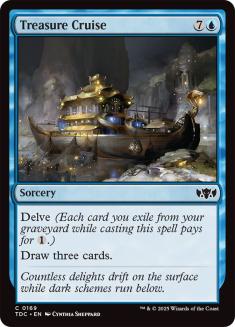

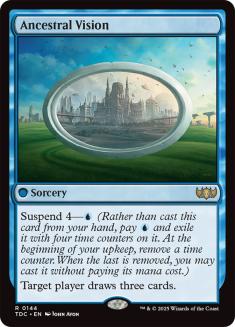

Card draw was what drove B/G out of the format, and it can help manage it.
Treasure Cruise is a non-option. While I argued against the banning last week, that was
more of using the card as a temporary stop gap until other answers to B/G could be found. It was going to have to go eventually, and the decision has been
made and should stay that way.
Dig Through Time and Ancestral Vision fall into similar categories, albeit helping different decks. Both are slower card draw and don’t really push the
aggressive limits of the format.
I think the whole “Dig would slot in over Cruise in Delver” argument was overstated. The additional mana was a big deal in stifling the high velocity
starts Cruise enabled, and the fact that Dig caps at two cards is a big deal when A) Delver has a bunch of interchangeable cards, and B) the issue with
Cruise was that the raw card quantity burying people was part of the problem.
Looking at what both options promote, I would honestly rather have Dig than Vision. The decks Dig Through Time promotes are combo-control or high end tap
out decks trying to find their specific high impact threats or answers, both slowing the format down significantly. A resolved Dig usually leads to a
quickly resolved game. Vision promotes Hybrid Control with Flash threats (Faeries or Restoration Angel) and Draw-Go. The play pattern for Ancestral
Vision is usually suspend, force game state to not progress for four turns, draw three, oh look I have more cards than you, let’s keep playing until you
have nothing and I have something. Given the choice of mid-game combo assembly and slow attrition-y death, I choose the former.
Of course, both is also an option. Or just Ancestral Vision, as Dig Through Time was just banned. Really, I’m expecting this to be the first place looked
when trying to find ways to punish attrition strategies in the format.
I’ve brought the artifact lands up in discussion before as a way to make Thirst for Knowledge a valid card draw option. The issue is the threat they pose
with Mox Opal. Maybe Affinity with Tezzeret is too good, maybe it’s Krark-Clan Ironworks. Either way, the best case scenario of adding an acceptable but
unexciting card draw effect to the format is less relevant than the risk of adding some degenerate combo deck to the format or pushing an existing good
deck over the edge. Unlike other A or B cases, there aren’t going to be cards on the level of artifact lands printed again, so whether Mox Opal or them is
legal is a straight trade, and one of these cards is something that has people heavily invested in the format and the other is something with historical
baggage and is currently banned. Maybe in the long- term this is something that gets looked at, but I think this is a decision that would take a lot of
research and isn’t as obviously good as others.
This somewhat flows into another point, whereby defeating B/G you could be introducing something even worse. This is especially pertinent after the last
bannings, where removing Delver and Pod brought the format to this point.
The four cost, non-creature threats. Unfortunately, both come with way too much baggage.
Pod is going to have to go at some point, much like how Survival of the Fittest eventually would have to leave Legacy even without Vengevine. Eventually
your toolbox combo deck just gets too many options and becomes an even worse format warping deck than what it was containing.
Jace might be interesting, but it might not. There is just already a supply issue on the card despite it being banned, and unbanning it leads to a lot of
awkward scenarios. Imagine it becomes one of the best cards in the format. How long is it until you can help supply catch up to demand, and how high do
prices go during that time? Maybe it stops at Tarmogoyf, maybe it doesn’t. Even when you can print it, it has to be at mythic. Jace might be the second
most iconic card of all time behind Black Lotus, and you don’t want to damage that status.
The two banned efficient threats. Well, the two that weren’t banned because of making B/G too good.
I really want Stoneforge Mystic to be reasonable enough. But Batterskull is likely just too good against every fair deck in the format, especially when
five mana Batterskull is one of the premier sideboard cards against all those decks already. It’s also likely that the Legacy trend of this card not
pairing with Tarmogoyf well may be specific to that format, which might just mean you make Stoneforge Mystic, Tarmogoyf, Abrupt Decay, Thoughtseize
monstrosities.
As for Green Sun’s Zenith, this has been my long-term pet argument. I personally think that the problem card is Dryad Arbor, which turns this card into a
mana creature-threat hybrid like Deathrite Shaman, not the toolbox enabler. Unlike Birthing Pod, Zenith is one shot and doesn’t create incremental
advantage on top of being a toolbox. However, I understand the logic that tutoring at this power level is dangerous, and I’m not actually sure this card
pushes anything other than B/G shifting from Liliana of the Veil to Knight of the Reliquary.
Overall
The B/G and combo state of Modern is something that has been lining up and shifting into place for several years. Odds are any fix won’t be immediate
either. Even the quick fixes of unbanning Dig Through Time or Ancestral Vision will take time as people adapt to playing those cards.
Of course, this slow response of the format could mean that the popular opinion of the format right now is extremely wrong as well. Pro Tours are typically
won by far more linear decks than are viable after a season of PTQs. It’s very possible that there just hasn’t been the time to sculpt a proper Gifts
Ungiven or Tasigur Control deck, though I’m willing to bet those look an awful lot like Thoughtseize–Abrupt Decay–Tarmogoyf with a different 48 other cards
than Abzan.
I also don’t want people to get the wrong impression. The format right now is pretty dynamic and interesting, it’s just a certain set of cards or
archetypes is approaching a point of being too constricting without an immediate answer to make it less so.
Modern is still a fairly young format. It’s barely been three years since the first point it could even be deemed remotely stable. Figuring out how to
properly regulate and manage it so that new cards matter without having the format go off the cliff too often is a delicate process. The state of the
format right now is an important test, and I’m really hoping all of the viable options are considered.

